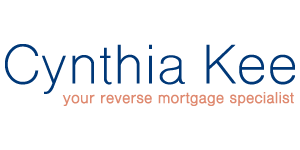3 Reverse Mortgage Strategies Available to Homeowners 62+
We all have the ability to make someone's life better with our love. ~ Kamand Kojouri
Many new reverse mortgage strategies are available for your use today than there were in years past. Thanks in large part to these recent changes, the FHA-insured Home Equity Conversion Mortgage (HECM) aka the reverse mortgage, has seen it’s place in the world shift dramatically. Until recently the reverse mortgage was viewed as a product of last resort. The many recent changes have shifted the program into it’s role as a financial planning tool with many reverse mortgage strategies becoming clear. Forbes published an article on May 18, 2015 that discusses three excellent opportunities to use the reverse mortgage.
One of the most thoroughly studied reverse mortgage strategies is known as the Standby Line of Credit Strategy. The standby line-of-credit option suggests using a reverse mortgage as an emergency line-of-credit to be tapped for income when the market is down. This can alleviate the strain on your portfolio that might come from withdrawing your usual income, allowing it the opportunity to potentially bounce back. When combining this factor with the credit line growth rate a recent study found this strategic use of a reverse mortgage significantly increased portfolio longevity.
The second of the reverse mortgage strategies discussed was using a reverse mortgage to supplement your income in order to delay taking Social Security until your full retirement age. Delaying Social Security can potentially provide significant increases in your monthly income when you do eventually begin receiving it. There is also the flexibility of delaying Social Security to potentially avoid paying increased taxes, depending on your individual situation. When to take your Social Security is a complicated decision that should be discussed with a knowledgeable professional. If you do feel that delaying Social Security might be right for you, a reverse mortgage may provide you the liquidity you need to do just that.
The last of the reverse mortgage strategies that the article discusses is the more traditional use of Eliminating Current Mortgage Payment / Debt with a Reverse mortgage. This is what many people do when taking a reverse mortgage, they use the proceeds to pay off an existing mortgage or home equity loan, or even to repay credit cards or other high interest debt. This can potentially lead to improved cash-flow for you, by eliminating your current monthly payment. It is important to remember that although the reverse mortgage does not require a monthly mortgage payment, you are still required to pay your property taxes, insurance, any applicable association fees or ground rents, and also maintain your home to FHA standards. Failure to do so will result in foreclosure. With that in mind, eliminating your monthly principal and interest payment is the difference between a successful retirement plan and a failed plan for many borrowers.


